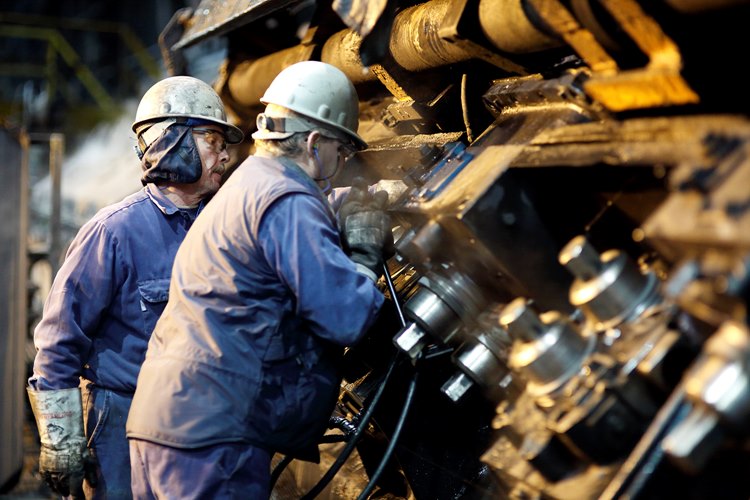Our steel rod operation has integrated energy, water, and waste efficiency into various aspects of the operation. Here’s a look at a few of the strategies in use to reduce environmental impacts and conserve resources.
Energy Management
Our electric arc furnace is significantly more energy efficient than a traditional blast furnace, and we continue to explore reputable research from the DOE to support this. The operation also produces during off-peak hours to help minimize the burden on the grid. In addition, energy-efficiency projects implemented at the facility are estimated to avoid approximately $300,000 annually in electricity costs and reduce electricity consumption by about 5,200 MWh. A completed lighting improvement project further enhanced efficiency, avoiding approximately 2.36 million kilowatt hours (kWh) annually and reducing carbon dioxide emissions by an estimated 1,130 metric tons each year.
Water Management
Steel production processes require significant amounts of water, which our steel rod mill reduces by reusing water to limit the facility’s reliance on groundwater. An onsite man-made pond serves as a cooling source for both the caster process and equipment cooling on the rod mill roll line. Through this reuse system, the water is circulated multiple times before being discharged.
Waste Management
In 2024, our steel rod mill used approximately 400,000 tons of recycled scrap steel in the production process. Beyond our operation, about 15,000 tons of slag/ladle debris produced by the electric arc furnace was reused as a road-building material by a local landfill. Additionally, dust created from the EAF is processed in a kiln where zinc and other heavy metals are recovered. Approximately 1,700 tons of zinc were reclaimed, with the remaining kiln by-product supplied to the cement industry as a raw material.
Resource efficiency isn’t limited to just steel and water at our steel rod mill. We recycle oil, wood, cardboard, and light bulbs, reinforcing a culture of environmental sustainability across operations.
Driving Emissions Reduction
Since 2019, our steel rod mill consistently represents a large percentage of our global combined Scope 1 and Scope 2 greenhouse gas (GHG) emissions. As a member of the Global Steel Climate Council (GSCC), our steel rod mill has committed to reduce greenhouse gas emissions from Scope 1, Scope 2, and upstream Scope 3 categories. Our steel rod mill is on a path to collect the required data to develop credible strategies and timelines for reducing GHG emissions associated with the commitment to the GSCC Standard.
Looking Forward
Our steel rod mill demonstrates sustainability in action through various energy, water, and waste related measures. Our team leads with intentional recycling, energy-saving practices, and a focus on honing into continuous improvement. Our work is helping shape a more sustainable future for our company and the communities we serve.
« Return